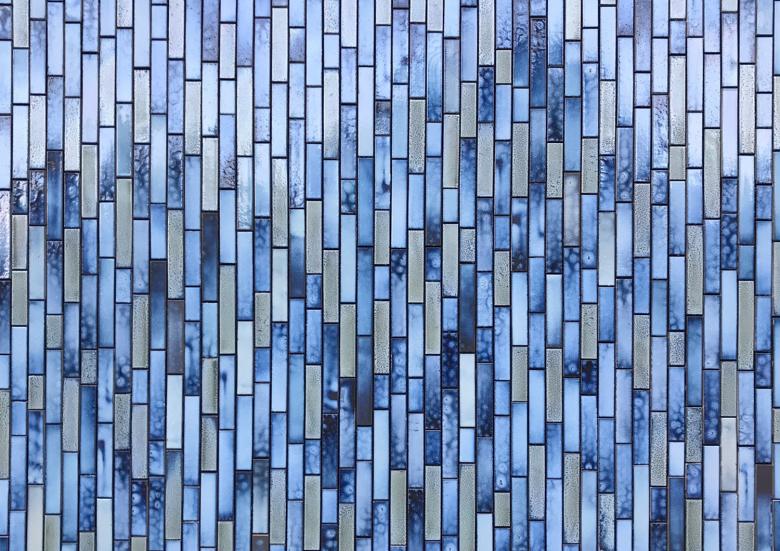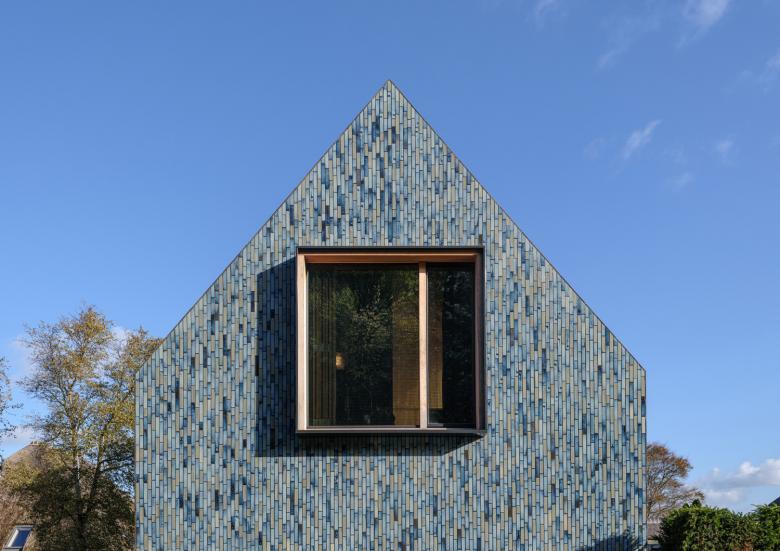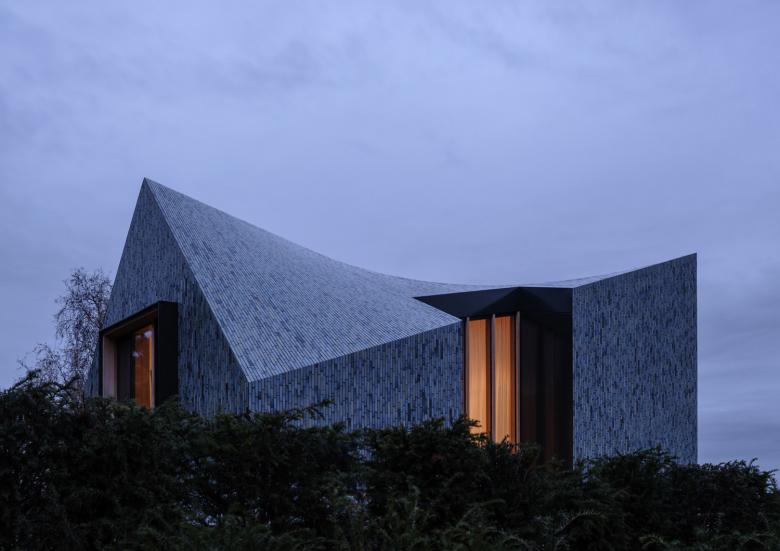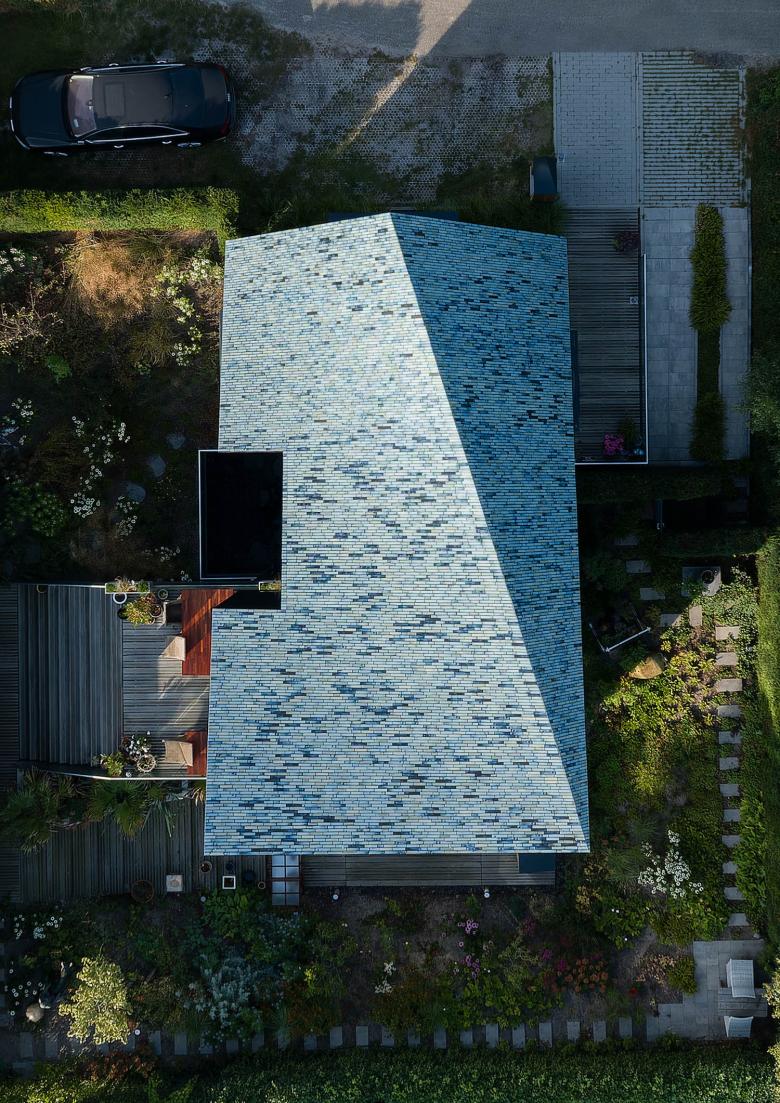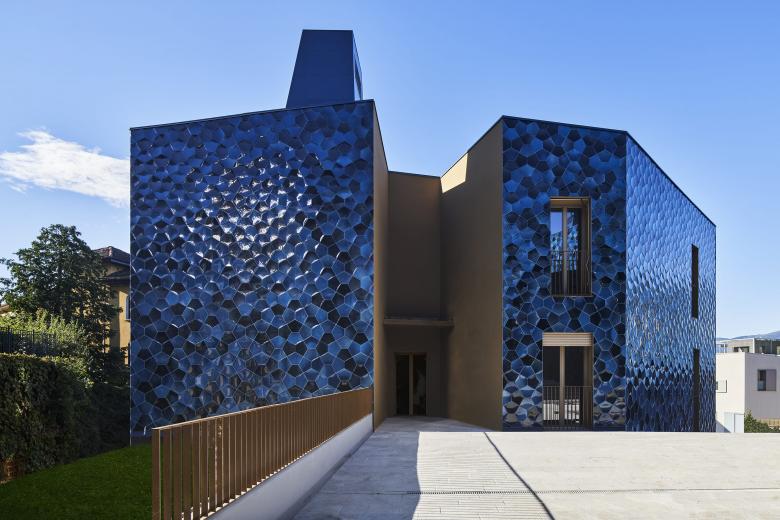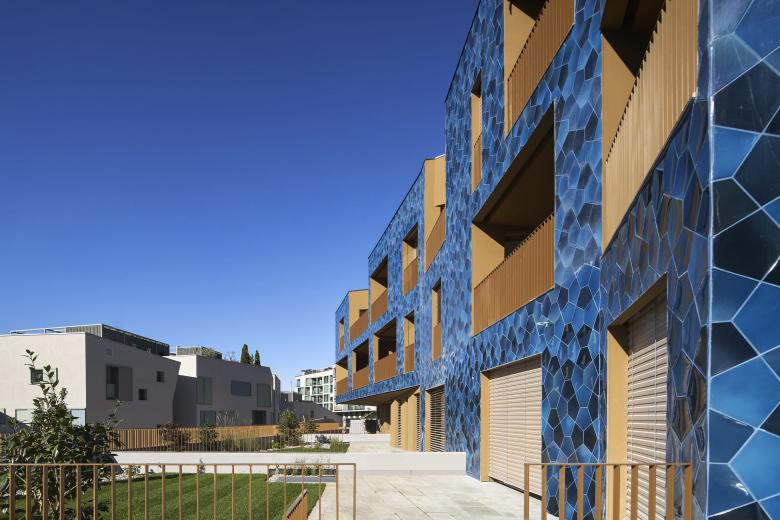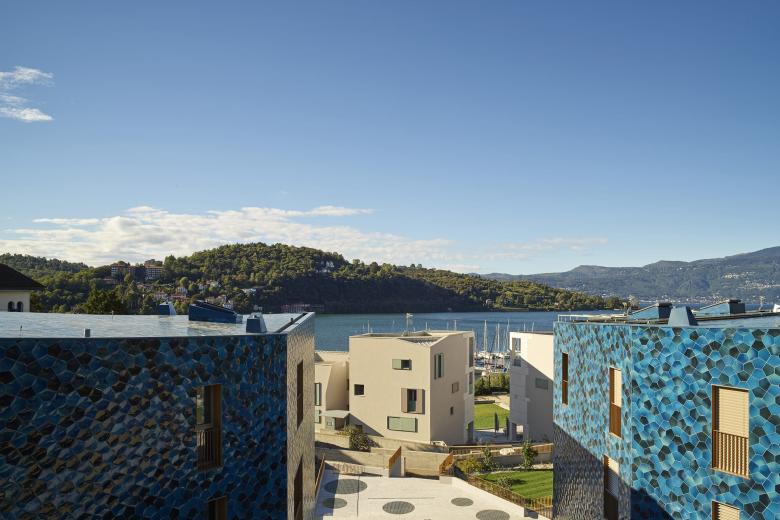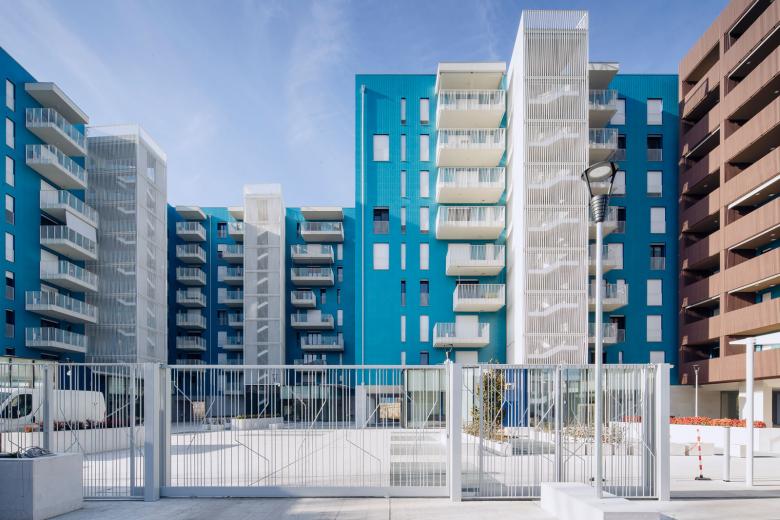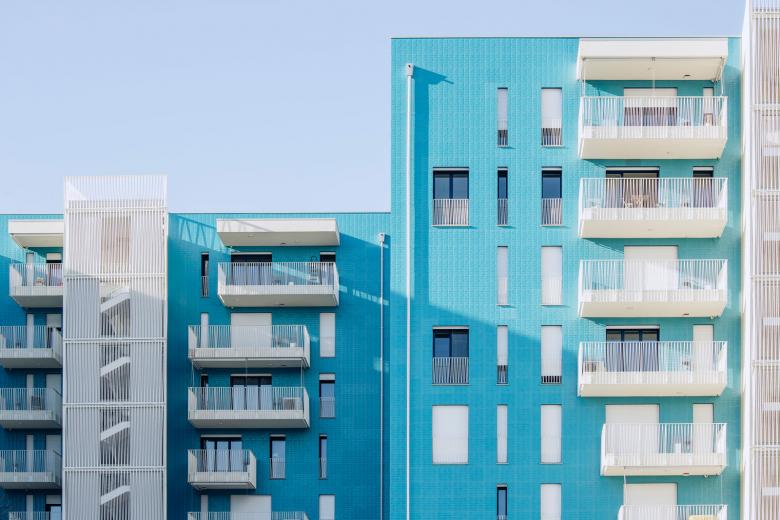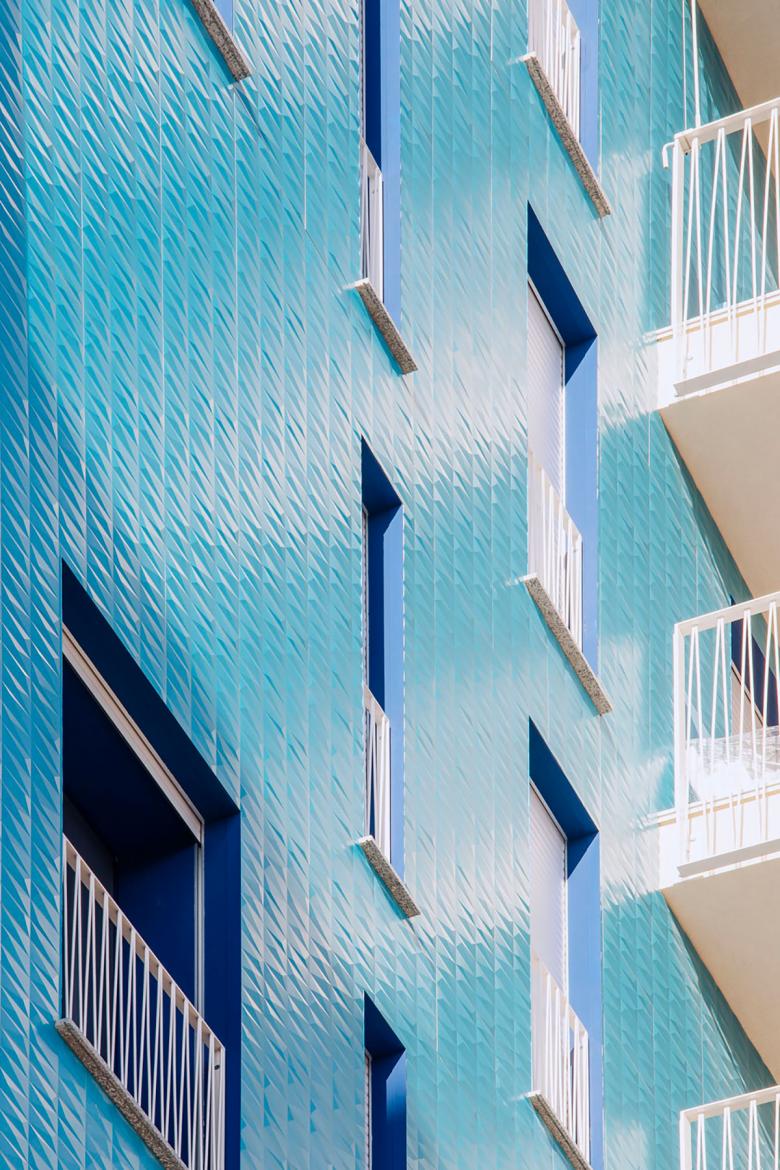Tiled Up in Blue
A trio of projects recently uploaded to World-Architects point to ceramic tile in shades of blue as a popular choice for covering the facades of residential buildings.
First up is Villa BW in Schoorl, Netherlands, designed by Delft's Mecanoo, a firm with an evident fondness for blue, as seen in their logo/branding and in projects like the Library Delft University of Technology. The villa faces the street with the iconic symbol of "house": the gable. The pixelated tiles punctuated by a large window clearly express that this is not a typical suburban house.
The house backs up against a polder, where it presents a simple horizontal roofline. A twisting roofline connects the front and rear facades, resulting in a faceted appearance on one side and a saddle form on the other (below). Outside of a notch faced with curtain wall, all of the exterior walls and roof are covered in the blue ceramic tile.
More accurately, the tile is in five shades of gray, green, and blue. "The glaze of the tiles is vibrant, glossy and has an iridescent effect, creating a pearlescent appearance on the tiles," in the words of the architects, "also influencing the incidence of light on the appearance of the facade and roof." Mecanoo also says the custom multicolored tile "represents the transitions in the landscape, from dune landscape to polder, and the soil layers, from light to dark."
The second project is a residential complex on Lake Maggiore in Laveno-Mombello, Italy, designed by Archea Associati and featured late last year as a Building of the Month on Italian-Architects. The complex is located on land once occupied by the headquarters of the ceramic company Pozzi-Ginori, thereby lending the project its name, Ex Ceramio Lago.
The ceramic lineage of the site also pointed to the use of ceramic tile on some of the elevations of the four buildings, while proximity to the water made shades of blue an obvious choice for the tile colors. The custom tiles made by Archea Associati in collaboration with Botteganove have an irregular pentagonal shape and were hand-glazed in six shades. Like Villa BW, the tiles also cover the roofs, "to make the buildings appear like four elements nestled in the surrounding mountainous landscape," per the architects.
The third project, also in Italy, is Living in the Blue, a pair of apartment buildings in the Lambrate district of Milan designed by Atelier(s) Alfonso Femia. The project was also featured last year as a Building of the Month on Italian-Architects, and it can be found in the profile of Atelier(s) Alfonso Femia.
Organized in L-shaped plans, the two buildings face each other with elevations covered with three-dimensional blue porcelain stoneware tiles made by Casalgrande Padana, specifically the Diamante Boa collection designed by Alfonso Femia. According to the architect, the iridescent ceramic facades dialogue with the "chiaroscuro" wood elements and plaster walls that were inspired by the "Positive Negative" artworks of Bruno Munari.
